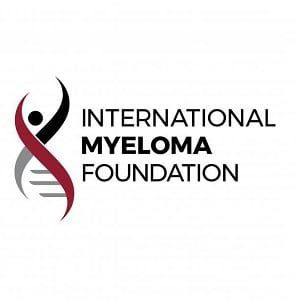About Multiple Myeloma
About Multiple Myeloma
If you have multiple myeloma or are close to someone who does, knowing what to expect can help you cope. Here you can find out all about multiple myeloma, including risk factors, symptoms, how it is found, and how it is treated. From the American Cancer Society.
What is Multiple Myeloma? Symptoms. Complications. Causes. Diagnosis. Treatment. The mission of The University of Texas MD Anderson Cancer Center is to eliminate cancer in Texas, the nation, and the world
Active Myeloma and Smoldering Myeloma. The Role of Plasma Cells. Symptoms. Risk Factors. Diagnosis & Staging. Treatment. From Memorial Sloan Kettering Cancer Center, “the world’s oldest and largest private cancer center.
Risk factors. Symptoms and signs. Diagnosis. Stages. Types of treatment. Questions to ask the health care team. About clinical trials. From Cancer.net, the American Society of Clinical Oncology’s patient information website.
What Is Multiple Myeloma? How Multiple Myeloma Impacts the Body. The Course of the Disease. Who Gets Multiple Myeloma? From the International Myeloma Foundation, “the first and largest organization focusing specifically on multiple myeloma.”
Most people just can’t make it to specialists like the ones on SurvivorNet. And they can’t afford to fly around the country getting second and third opinions. That’s okay. We’re bringing the expertise to you. We hope the information here creates power… and comfort.
Myeloma Made Simple
Hello, my name is Dr Joseph Mikhael and I am the Chief Medical Officer of the International Myeloma Foundation. It’s my privilege today to try and make Multiple Myeloma simple. Let’s start with the basics of blood because Multiple Myeloma is a cancer of the blood.
A 5-minute video from the International Myeloma Foundation.
"Knowing the signs and symptoms can give you the best chances of effective treatment"
African Americans are nearly twice as likely as Caucasians to develop myeloma. But new treatments are available that are helping myeloma patients live longer and maintain a good quality of life,” says Brion V. Randolph, MD, of the University of Tennessee Health Science Center.
Knowing the signs and symptoms of myeloma can help you to know when you need to talk to your doctor and give you the best chances of receiving early and effective treatment.
Bone pain is the most common early symptom of myeloma. Most patients feel pain in their back or ribs, but it can occur in any bone. Another common symptom of myeloma is frequent bone fractures, even during normal activities such as walking, lifting sneezing or coughing.
Some patients feel tired and weak due to low red blood cell counts, a condition called anemia. Also people with myeloma may get sick often or experience repeated infections.
A 4-minute video from the Leukemia & Lymphoma Society
"The treatments are improving, the quality of life is improving"
“Multiple myeloma is an incurable blood cancer that produces a lot of proteins that can cause damage to various organs, particularly the bones, as well as the kidney,” says the Mayo Clinic’s Rahma Warsame, MD.
Symptoms vary but can include fatigue, bone pain, anemia, and frequent infections.
While it’s not clear what causes multiple myeloma, doctors know that it begins with an abnormal plasma cell in your bone marrow, which produces too much protein inappropriately and multiplies rapidly.
“It’s when you find a little excess protein in the blood that indicates that you have the potential to become a multiple myeloma patient.”
Like many other cancers, the disease can be treated with medication, chemotherapy, radiation and even bone marrow transplant.
“The treatments are improving, the quality of life is improving. I’ve seen it in my own lifetime,” says Warsame.
A 1-minute video from the Mayo Clinic
"For last 10-15 years, the outlook has been transformed favorably by novel therapies."
“Multiple myeloma is a blood cancer that arises from a cell called a plasma cell, which is an important part of of one’s normal immune system producing antibodies,” says Paul G. Richardson, MD, of the Dana-Farber Cancer Institute in Boston.
What typically happens is that patients are identified with a high serum protein or some other end organ function of their disease, so that they can have a low hemoglobin or be slightly anemic and that can then trigger an investigation that finds the disease.
It starts as what’s called a monoclonal gammopathy democracy of uncertain significance (MGUS), becomes a smoldering process and then becomes an active disease. Unfortunately, in its active form, it can be very dangerous. It requires prompt therapy.
Until recently, unfortunately, it used to have a poor prognosis. But fortunately, for the last 10 to 15 years, the outlook has been transformed favorably by the advent of what we call novel therapies.
A 7-minute video from Cancer.Net
Early stages of multiple myeloma
MGUS: Monoclonal Gammopathy of Undetermined Significance
African Americans are more likely to have the earliest stage of myeloma, which is not cancer at all, but a benign condition called monoclonal gammopathy of undetermined significance or MGUS (usually pronounced as “EM-guss”).
Everyone who eventually develops active myeloma once had MGUS, but most people with MGUS never develop myeloma. Patients with MGUS have low levels in the blood of monoclonal protein known as M-protein, but no symptoms and are not treated. About 1% of MGUS patients progress to active myeloma per year.
Source: “What Are MGUS, Smoldering Multiple Myeloma, and Active Myeloma?” from the International Myeloma Foundation.
Smoldering Myeloma
Smoldering multiple myeloma (SMM) is an intermediate stage of myeloma between MGUS and active myeloma. Patients with SMM have a higher level of monoclonal protein and more abnormal plasma cells in the bone marrow than patients with MGUS. But SMM patients are asymptomatic and do not have any CRAB criteria (measurement of end-organ damage), or damage to red blood cells, kidneys, or bones.
The risk of progression to active myeloma for patients with standard-risk SMM is 10% per year for the first five years, 3% per year for the next five years, and 1-2% per year for the next 10 years. The standard of care for SMM is not to treat the patient but to “watch and wait.” There are clinical trials available to treat patients with SMM and “high-risk” SMM before their disease progresses.
Source: “What Are MGUS, Smoldering Multiple Myeloma, and Active Myeloma?” from the International Myeloma Foundation.






